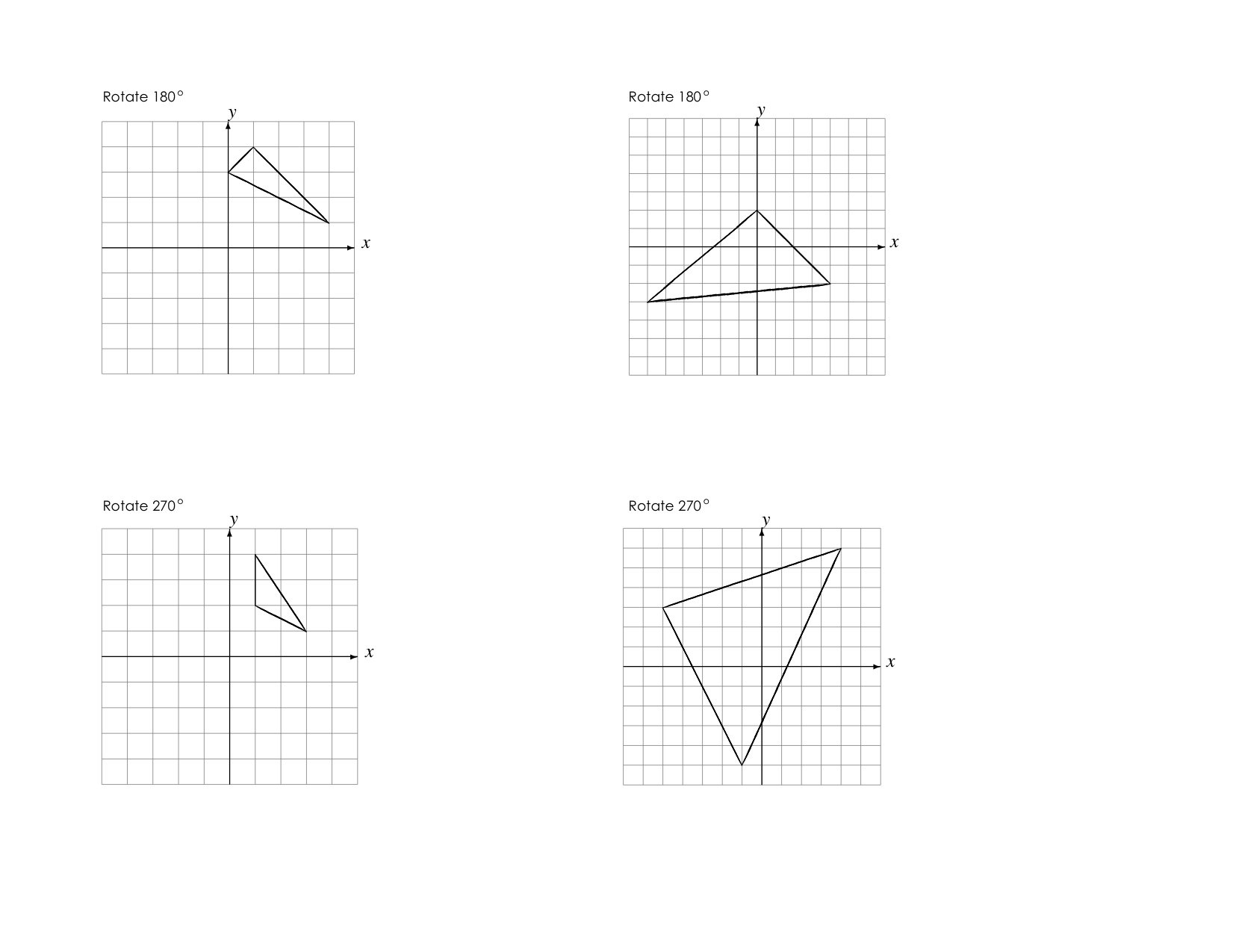
That and it looks like it is getting us right to point A. Use the pencil and put the tip onto the fixed point. 2 Rotate the tracing paper about the centre of enlargement. Use a pencil and trace the shape onto a piece of tracing paper. Rotate the shaded shape 90o 90o clockwise about the fixed point: Trace the shape. Our center of rotation, this is our point P, and we're rotating by negative 90 degrees. Example 1: rotate a shape about a fixed point. Which point is the image of P? So once again, pause this video and try to think about it. The rotation angle is defined by the two vectors created by the three points (between vector Point2-Point1 and vector Point2-Point3): The orientation of the elements (lines or planes) is visualized in the 3D geometry by a red arrow. Than 60 degree rotation, so I won't go with that one. And it looks like it's the same distance from the origin. Like 1/3 of 180 degrees, 60 degrees, it gets us to point C.
#Rotation geometry full#
So does this look like 1/3 of 180 degrees? Remember, 180 degrees wouldīe almost a full line. If this triangle is rotated 270° clockwise, find the. Problem 1 : Let F (-4, -2), G (-2, -2) and H (-3, 1) be the three vertices of a triangle. One way to think about 60 degrees, is that that's 1/3 of 180 degrees. (-y, x) When we rotate a figure of 270 degree clockwise, each point of the given figure has to be changed from (x, y) to (-y, x) and graph the rotated figure. So this looks like aboutĦ0 degrees right over here. In real life we can understand the rotational movement by studying the movement of the Earth. P is right over here and we're rotating by positive 60 degrees, so that means we go counterĬlockwise by 60 degrees. Rotation is a movement around an axis and by rotation geometry we define that: Rotation is a motion of an object around the center of an axis. It's being rotated around the origin (0,0) by 60 degrees. Which point is the image of P? Pause this video and see But points, lines, and shapes can be rotates by any point (not just the origin)! When that happens, we need to use our protractor and/or knowledge of rotations to help us find the answer.That point P was rotated about the origin (0,0) by 60 degrees. The rotation rules above only apply to those being rotated about the origin (the point (0,0)) on the coordinate plane.

If we compare our coordinate point for triangle ABC before and after the rotation we can see a pattern, check it out below: To derive our rotation rules, we can take a look at our first example, when we rotated triangle ABC 90º counterclockwise about the origin. Rotation Rules: Where did these rules come from? Yes, it’s memorizing but if you need more options check out numbers 1 and 2 above! Know the rotation rules mapped out below. Questions: For 90 degree and 180 degree rotations, can you predict what will happen to the image when you move a) the source, and b) the centre of rotation Is.

You must use positive angles or CW or negative angles for CCW. This calculator will tell you its (0,-1) when you rotate by +90 deg and (0,1) when rotated by -90 deg. The vector (1,0) rotated +90 deg CCW is (0,1). Use a protractor and measure out the needed rotation. The X,Y equations listed are for CW rotations but the calculator tells you to define CCW as positive.We can visualize the rotation or use tracing paper to map it out and rotate by hand.There are a couple of ways to do this take a look at our choices below: Let’s take a look at the difference in rotation types below and notice the different directions each rotation goes: How do we rotate a shape? Rotations are a type of transformation in geometry where we take a point, line, or shape and rotate it clockwise or counterclockwise, usually by 90º,180º, 270º, -90º, -180º, or -270º.Ī positive degree rotation runs counter clockwise and a negative degree rotation runs clockwise.


 0 kommentar(er)
0 kommentar(er)
